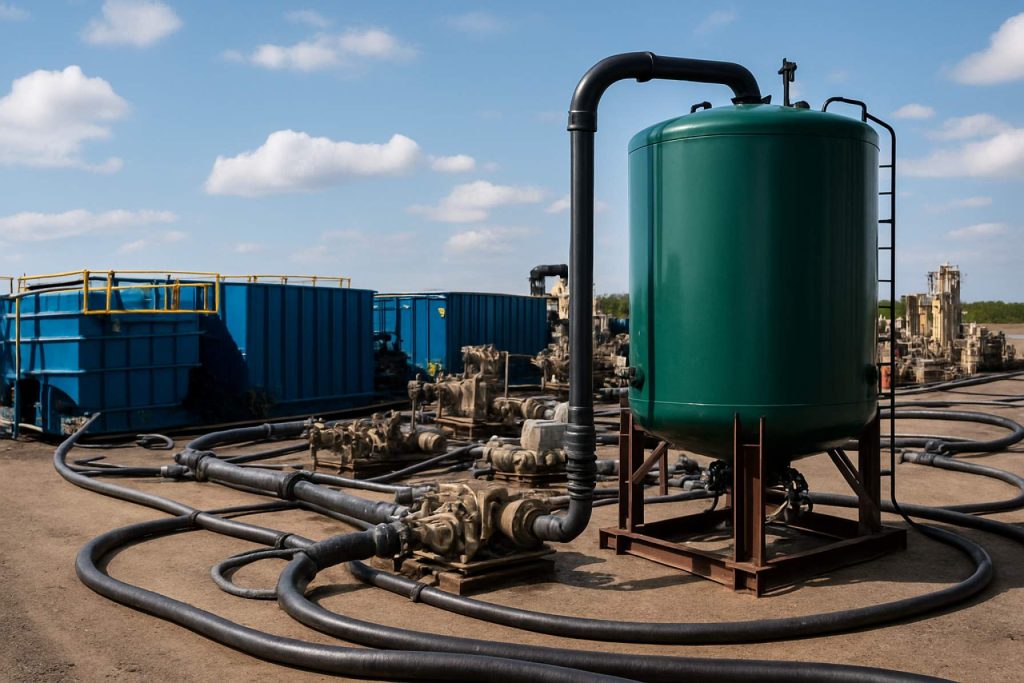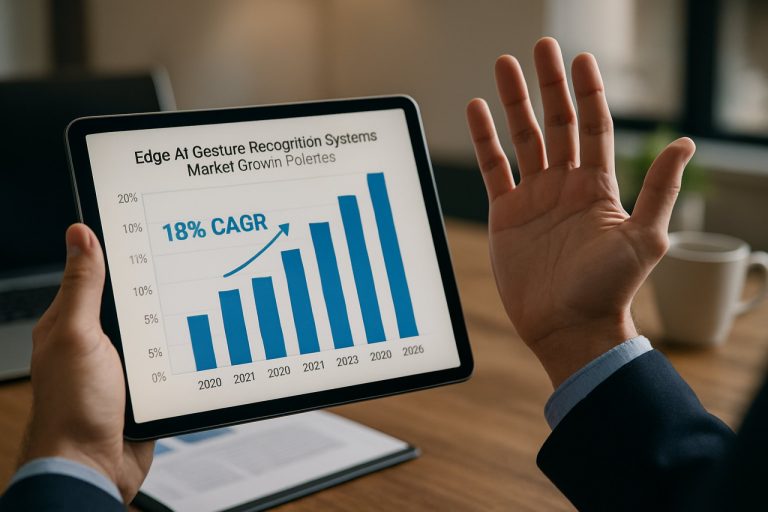
2025 Hydrofracturing Fluid Reclamation Technologies Market Report: Innovations, Growth Projections, and Strategic Insights for the Next 5 Years
- Executive Summary & Market Overview
- Key Technology Trends in Hydrofracturing Fluid Reclamation
- Competitive Landscape and Leading Players
- Market Growth Forecasts (2025–2030): CAGR, Revenue, and Volume Analysis
- Regional Market Analysis: North America, Europe, APAC, and Rest of World
- Challenges and Opportunities in Fluid Reclamation Technologies
- Future Outlook: Emerging Innovations and Strategic Recommendations
- Sources & References
Executive Summary & Market Overview
Hydrofracturing fluid reclamation technologies refer to the suite of processes and systems designed to treat, recycle, and reuse fluids used in hydraulic fracturing (fracking) operations. As the global energy sector intensifies its focus on sustainability and regulatory compliance, the reclamation of hydrofracturing fluids has emerged as a critical market segment. In 2025, the market for these technologies is shaped by increasing environmental scrutiny, water scarcity concerns, and the economic imperative to reduce operational costs in oil and gas extraction.
The hydrofracturing process consumes vast quantities of water, generating significant volumes of flowback and produced water laden with chemicals, suspended solids, and hydrocarbons. Traditional disposal methods, such as deep well injection, are facing mounting regulatory and public opposition, particularly in regions like North America and China, which are major shale gas producers. This has accelerated the adoption of advanced reclamation technologies, including membrane filtration, advanced oxidation, electrocoagulation, and zero-liquid discharge systems.
According to Grand View Research, the global hydraulic fracturing market is projected to reach USD 89.5 billion by 2025, with fluid management and reclamation technologies representing a rapidly growing subsegment. The North American market, led by the United States, remains the largest adopter due to stringent water management regulations and the scale of unconventional resource development. Meanwhile, regions such as the Middle East and Asia-Pacific are witnessing increased investment in reclamation infrastructure as part of broader water conservation strategies.
Key industry players, including SLB (Schlumberger), Halliburton, and Baker Hughes, are investing in R&D to enhance the efficiency and cost-effectiveness of their reclamation solutions. These efforts are complemented by a growing ecosystem of specialized technology providers and service companies focused on modular, on-site treatment systems and digital monitoring platforms.
- Market drivers: regulatory mandates, water scarcity, operational cost reduction
- Challenges: high capital costs, variability in water chemistry, technology integration
- Opportunities: digitalization, modular systems, expansion into emerging markets
In summary, the hydrofracturing fluid reclamation technologies market in 2025 is characterized by robust growth, technological innovation, and a strategic shift toward sustainable water management practices across the global oil and gas industry.
Key Technology Trends in Hydrofracturing Fluid Reclamation
Hydrofracturing fluid reclamation technologies are rapidly evolving in response to increasing regulatory scrutiny, water scarcity, and cost pressures in the oil and gas sector. As of 2025, several key technology trends are shaping the reclamation landscape, focusing on maximizing water reuse, minimizing environmental impact, and improving operational efficiency.
- Advanced Membrane Filtration: Innovations in membrane technologies, such as reverse osmosis (RO), nanofiltration, and forward osmosis, are enabling more efficient separation of contaminants from produced and flowback water. Recent advancements have improved membrane fouling resistance and energy efficiency, making these systems more viable for large-scale deployment in hydrofracturing operations. Companies like GE Water & Process Technologies and Veolia Water Technologies are at the forefront of commercializing these solutions.
- Electrochemical Treatment: Electrocoagulation and electro-oxidation systems are gaining traction for their ability to remove dissolved solids, heavy metals, and organic contaminants without the need for chemical additives. These systems are particularly attractive for remote or decentralized operations due to their modularity and relatively low footprint. Eco-Tec and OriginClear are notable providers in this space.
- Zero Liquid Discharge (ZLD) Systems: ZLD technologies, which recover nearly all water from waste streams and leave behind only solid residues, are being increasingly adopted in regions with stringent water disposal regulations. Thermal evaporation, crystallization, and hybrid ZLD systems are being deployed by companies such as SUEZ Water Technologies & Solutions to help operators achieve compliance and reduce freshwater demand.
- Mobile and Modular Treatment Units: The development of compact, mobile water treatment units allows for on-site reclamation and reuse of hydrofracturing fluids, reducing transportation costs and environmental risks. These units are designed for rapid deployment and scalability, addressing the dynamic needs of unconventional oil and gas fields.
- Data-Driven Process Optimization: Integration of real-time monitoring, automation, and artificial intelligence is enhancing the efficiency and reliability of fluid reclamation systems. Predictive analytics and remote diagnostics are enabling proactive maintenance and process adjustments, as highlighted by SLB (Schlumberger) and Halliburton in their digital water management platforms.
These technology trends are expected to continue driving improvements in water recovery rates, cost-effectiveness, and environmental performance of hydrofracturing fluid reclamation through 2025 and beyond.
Competitive Landscape and Leading Players
The competitive landscape for hydrofracturing fluid reclamation technologies in 2025 is characterized by rapid innovation, strategic partnerships, and a growing emphasis on sustainability. As regulatory pressures and water scarcity concerns intensify, oil and gas operators are increasingly seeking advanced solutions to recycle and reuse produced and flowback water from hydraulic fracturing operations. This has spurred significant activity among technology providers, both established and emerging, who are vying for market share through differentiated offerings and proven field performance.
Leading players in this sector include SLB (Schlumberger), Halliburton, and Baker Hughes, all of whom have developed proprietary water treatment and reclamation systems tailored for unconventional oil and gas plays. These companies leverage their global reach, R&D capabilities, and integrated service models to deliver turnkey solutions that address both technical and regulatory challenges. For example, SLB’s water services division offers modular treatment units capable of removing suspended solids, dissolved organics, and scaling agents, enabling high rates of water reuse on-site.
In addition to these oilfield service giants, specialized water technology firms such as Ecolab (Nalco Water) and Xylem Inc. have made significant inroads by offering advanced membrane filtration, electrocoagulation, and chemical treatment systems. These companies often partner with operators to pilot new technologies and optimize treatment trains for specific basin chemistries. Ecolab, for instance, has reported successful deployments of its modular mobile units in the Permian Basin, achieving up to 90% water recovery rates and substantial reductions in chemical consumption.
Emerging players and startups are also shaping the competitive landscape by introducing disruptive technologies such as zero-liquid discharge (ZLD) systems, advanced oxidation processes, and real-time water quality monitoring platforms. Companies like OriginClear and Aquatech International are gaining traction with scalable, cost-effective solutions that appeal to both large independents and smaller operators.
Overall, the market is witnessing increased collaboration between technology providers, oilfield operators, and regulatory bodies to accelerate the adoption of efficient hydrofracturing fluid reclamation technologies. Competitive differentiation is increasingly based on treatment efficiency, operational flexibility, cost-effectiveness, and the ability to meet evolving environmental standards, positioning the sector for continued growth and innovation in 2025.
Market Growth Forecasts (2025–2030): CAGR, Revenue, and Volume Analysis
The hydrofracturing fluid reclamation technologies market is poised for robust growth between 2025 and 2030, driven by increasing regulatory pressures, water scarcity concerns, and the oil & gas sector’s focus on cost efficiency. According to projections by MarketsandMarkets, the global market for hydraulic fracturing fluids and associated reclamation technologies is expected to register a compound annual growth rate (CAGR) of approximately 7.2% during this period. This growth is underpinned by the rising adoption of advanced water treatment and recycling solutions in major shale-producing regions such as North America, China, and Argentina.
Revenue-wise, the market is anticipated to reach a valuation of USD 4.8 billion by 2030, up from an estimated USD 3.1 billion in 2025. This expansion is attributed to both the increasing volume of hydraulic fracturing operations and the higher penetration of closed-loop and zero-liquid discharge (ZLD) systems, which command premium pricing due to their efficiency and compliance benefits. Grand View Research highlights that the North American market will continue to dominate, accounting for over 60% of global revenues, as operators in the Permian, Bakken, and Marcellus basins invest heavily in fluid reclamation infrastructure to meet tightening environmental standards.
In terms of volume, the total amount of hydrofracturing fluid treated and reclaimed is projected to grow from approximately 1.2 billion barrels in 2025 to over 1.8 billion barrels by 2030. This surge is driven by both the expansion of unconventional oil and gas extraction and the increasing regulatory mandates for water reuse. Wood Mackenzie reports that by 2030, more than 45% of all fracturing fluid used in U.S. shale operations will be recycled, up from 28% in 2025, reflecting a significant shift toward sustainable water management practices.
- CAGR (2025–2030): ~7.2%
- Projected Market Revenue (2030): USD 4.8 billion
- Volume of Fluid Reclaimed (2030): 1.8 billion barrels
- Key Growth Drivers: Regulatory compliance, water scarcity, cost savings, and technological advancements
Regional Market Analysis: North America, Europe, APAC, and Rest of World
The regional market dynamics for hydrofracturing fluid reclamation technologies in 2025 reflect varying regulatory pressures, resource availability, and technological adoption across North America, Europe, Asia-Pacific (APAC), and the Rest of the World (RoW).
North America remains the largest and most mature market for hydrofracturing fluid reclamation, driven by the extensive shale gas and tight oil operations in the United States and Canada. Stringent environmental regulations, such as those enforced by the U.S. Environmental Protection Agency, have accelerated the adoption of advanced water treatment and recycling technologies. Companies are investing in membrane filtration, advanced oxidation, and zero-liquid discharge systems to reduce freshwater consumption and minimize wastewater disposal costs. The presence of established oilfield service providers and technology innovators further supports market growth in this region.
Europe exhibits a more cautious approach to hydrofracturing, with several countries imposing bans or strict limitations on fracking activities. However, in regions where hydrofracturing is permitted, such as the United Kingdom and parts of Eastern Europe, there is a strong emphasis on environmental stewardship. The European Union’s Water Framework Directive and local regulations have prompted operators to adopt closed-loop water management systems and advanced reclamation technologies. Market growth is moderate but characterized by high-value, niche applications and a focus on compliance with sustainability standards set by the European Commission.
- APAC is an emerging market, with China and Australia leading the adoption of hydrofracturing fluid reclamation technologies. China’s push for energy security and pollution control, as outlined by the Ministry of Ecology and Environment of the People’s Republic of China, has resulted in significant investments in water recycling infrastructure. Australia’s unconventional gas sector is also adopting advanced treatment solutions to address water scarcity and regulatory requirements. However, the region faces challenges related to technology transfer, high capital costs, and varying regulatory frameworks.
- Rest of the World (RoW) includes Latin America, the Middle East, and Africa, where hydrofracturing activity is less widespread but growing. In these regions, adoption of fluid reclamation technologies is primarily driven by water scarcity and the need to reduce operational costs. Countries like Argentina and Saudi Arabia are exploring pilot projects and partnerships with international technology providers, as reported by Wood Mackenzie and Baker Hughes.
Overall, the global market for hydrofracturing fluid reclamation technologies in 2025 is shaped by regional regulatory landscapes, resource constraints, and the pace of technological innovation, with North America leading in scale and APAC showing the fastest growth potential.
Challenges and Opportunities in Fluid Reclamation Technologies
Hydrofracturing, or “fracking,” generates vast volumes of wastewater, presenting both environmental challenges and opportunities for technological innovation in fluid reclamation. As regulatory scrutiny intensifies and water scarcity becomes a critical concern, the market for advanced hydrofracturing fluid reclamation technologies is poised for significant evolution in 2025.
Challenges
- Complex Contaminant Profiles: Fracturing fluids contain a mix of organic chemicals, heavy metals, and high total dissolved solids (TDS), making treatment and reuse technically demanding. Technologies must address not only suspended solids but also dissolved salts and trace contaminants, which can foul membranes and reduce process efficiency.
- High Operational Costs: Advanced treatment methods such as reverse osmosis, thermal distillation, and advanced oxidation processes are capital- and energy-intensive. According to International Energy Agency, the cost of treating produced water can range from $3 to $10 per barrel, often exceeding the cost of freshwater sourcing in some regions.
- Regulatory Uncertainty: Evolving regulations at state and federal levels, particularly in the U.S., create uncertainty for operators investing in reclamation infrastructure. The U.S. Environmental Protection Agency continues to review and update guidelines for wastewater discharge and reuse, impacting project planning and technology adoption.
- Logistical Barriers: Transporting, storing, and treating large volumes of wastewater in remote drilling locations remains a logistical hurdle, often requiring mobile or modular treatment solutions.
Opportunities
- Technological Innovation: Companies are developing hybrid systems that combine physical, chemical, and biological processes to improve contaminant removal and reduce costs. For example, Veolia Water Technologies and SUEZ Water Technologies & Solutions are piloting modular, scalable systems tailored for on-site treatment and reuse.
- Water Reuse and Circular Economy: Treated fracturing fluids can be reused in subsequent operations, reducing freshwater demand and disposal costs. The Global Water Intelligence projects that the market for produced water treatment and reuse in North America will exceed $6 billion by 2025, driven by both regulatory and sustainability pressures.
- Digitalization and Automation: Integration of real-time monitoring, data analytics, and automation is enhancing process control, optimizing chemical dosing, and reducing downtime, as highlighted by Schneider Electric in its recent industry reports.
- Policy Incentives: Emerging incentives for water conservation and emissions reduction, particularly in drought-prone regions, are accelerating investment in reclamation technologies.
In summary, while hydrofracturing fluid reclamation faces significant technical and economic barriers, 2025 is expected to see accelerated adoption of innovative solutions, driven by regulatory, environmental, and market forces.
Future Outlook: Emerging Innovations and Strategic Recommendations
The future of hydrofracturing fluid reclamation technologies is poised for significant transformation in 2025, driven by mounting regulatory pressures, water scarcity concerns, and the oil and gas sector’s commitment to sustainability. Emerging innovations are focusing on enhancing the efficiency, cost-effectiveness, and environmental compatibility of fluid reclamation processes, with a particular emphasis on closed-loop systems, advanced membrane filtration, and real-time water quality monitoring.
One of the most promising trends is the integration of membrane-based separation technologies, such as forward osmosis and nanofiltration, which offer high selectivity for contaminants and reduced energy consumption compared to traditional thermal methods. Companies are piloting hybrid systems that combine these membranes with electrocoagulation or advanced oxidation processes, enabling the removal of both dissolved solids and organic compounds from flowback and produced water. For instance, Veolia Water Technologies has demonstrated modular solutions that can be rapidly deployed at well sites, reducing the need for offsite disposal and freshwater sourcing.
Another area of innovation is the deployment of real-time monitoring and automation using IoT sensors and AI-driven analytics. These systems allow operators to continuously assess water quality parameters and dynamically adjust treatment protocols, optimizing chemical dosing and minimizing waste. Xylem Inc. and other technology providers are investing in smart water management platforms that integrate with existing field operations, supporting data-driven decision-making and regulatory compliance.
Looking ahead, strategic recommendations for industry stakeholders include:
- Investing in R&D partnerships with technology providers and research institutions to accelerate the commercialization of next-generation reclamation systems.
- Adopting modular, scalable treatment units that can be tailored to varying water chemistries and operational scales, enhancing flexibility and cost control.
- Engaging proactively with regulators to shape evolving water reuse standards and demonstrate the environmental benefits of advanced reclamation technologies.
- Exploring opportunities for cross-sector collaboration, such as using reclaimed water in agriculture or industrial processes, to create new revenue streams and improve public perception.
As the hydrofracturing industry navigates a complex landscape of environmental stewardship and operational efficiency, the adoption of innovative fluid reclamation technologies will be central to its long-term viability and social license to operate. Market leaders who prioritize these advancements are likely to gain a competitive edge in 2025 and beyond.
Sources & References
- Grand View Research
- SLB (Schlumberger)
- Halliburton
- Baker Hughes
- GE Water & Process Technologies
- Veolia Water Technologies
- Aquatech International
- MarketsandMarkets
- Wood Mackenzie
- European Commission
- Ministry of Ecology and Environment of the People’s Republic of China
- International Energy Agency
- Global Water Intelligence



